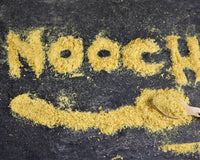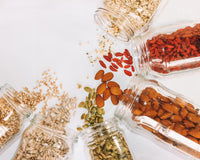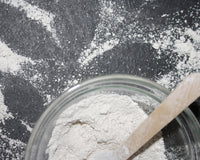As we swoop into the summer holidays, we are having the odd days where the weather is HOT. In reading the weather forecast, people race around supermarkets looking for BBQ foods and ‘picky bits’ to suit the momentary whisk of heat and sun, all so we can have that happy moment, eating dinner in the garden!
As lovely as having picky bits and a Pimm’s in the hot heat are, we need to remember to keep up with our healthy eating habits too. Whilst we enjoy the warmth, it is important to eat whole foods, to keep our bodies energised and hydrated. Eating lighter and fresher foods will benefit your digestion, keep you feeling great, and prevent you from experiencing that sluggish feeling from overeating.
Water-packed Fruit and Veg
Now we all know the benefits of eating fruit and vegetables, these wholefoods are packed with vitamins and minerals that work to help your body function. In a previous article, we spoke about how fruit and veg helps support your weight, muscles, energy, and especially your digestive system.
However, when we incorporate the heat from a summer’s day into the mix, we are looking at very specific fruit and veg. With a rise in temperature, our body will naturally work to stay regulated, and cool us down when we are overheating. In attempting to do this, our body will sweat, releasing water and salts. It is our job to replenish the water and salts we have lost.
Here are some great whole food examples that have a high percentage of water to keep you hydrated:
Greens and Salads
Greens are the superfoods of the whole food world, so you should definitely be including them in your summer meals! Greens can be eaten completely raw in salad based meals, making them perfect for heatwaves. No added heat from cooking!
These ingredients (spinach, rocket, lettuce, watercress, kale, celery, cucumber, peas, courgette, swiss chard, bok-choy, leaks, coriander, broccoli, asparagus, artichoke, and green bell/chili peppers) contain phytochemicals or phytonutrients (linked to the natural colouring found in vegetables, fruit, and other foods) which contain beneficial resources for the body, that vitamins and minerals can’t necessarily produce. Phytochemicals have been linked to things like lowering body mass, lowering the risk of cardiovascular diseases, and lowering the future risk of some cancers. Darker greens are also particularly healthy as they are also incredibly hydrating.
Whole Grains
The great thing about using whole grains in the summer, is that you don’t have to use the oven to cook them- you can boil, microwave, or even simply defrost wholegrains. We want to get away from making ourselves even hotter when we’re experiencing a heatwave, and there are plenty of options with wholegrains. They are filling and satisfying to eat.
Cereals, rice, sandwiches, whole grain pastas, bread salads, quinoa, and couscous are all great examples of either heatless, or minimally cooked meals.
As well as being a versatile choice for breakfast, lunch, and dinner, whole grains are a super whole food. Full of fibre, nutrients, vitamins, and minerals, they support lots of different parts of your body. Most commonly known for regulating, and lowering cholesterol, whole grains also help lower insulin levels; which contribute to preventing weight issues, future risk of diabetes, and heart conditions.
Protein Pasta
Protein is an essential element for the diet. Protein helps retain, heal, and help grow muscles. An alternative to traditional pasta, ‘Protein Pasta’ is packed with protein-rich ingredients. For those who are living a plant-based diet, it is a great substitute to customary pasta, as it helps people get a higher amount of protein that they are missing from animal products.
Protein Pasta is popular with people starting a Keto diet as it contains less carbohydrates and more fibre than traditional pasta. With this being said, it is a great option for hot days as you get less of a stodgy feeling after eating it as its more protein based than carb. Protein pasta can be great in a cold pasta salad, a refreshing but filling meal, perfect to eat at the end of a warm summer’s day.
NOTE:
Depending on what type of protein pasta you are going for, it might not be gluten free. Most ‘bean’ based protein or ‘legume pasta’ is gluten-free because it comes from a soy concentrate rather than wheat. However, most protein pastas double up on the protein and use wheat and extra ingredients. It is important to check all the ingredients before you go head first in trying the product.
Here is a list of all the different protein options:
Soy concentrate, green lentils, red lentils, chickpeas, lupin beans, black beans, fava beans, legumes, barilla protein, edamame, green pea, yellow pea, and egg pasta.
Oats
Another versatile ingredient for those hot days is oats. The complex carbohydrate can be eaten hot or cold, and can come in plenty of meal options; for breakfast, lunch, and dinner. As an ingredient on its own, it can be quite bland, but that is not a bad thing. If you pair oatmeal with a sweet or salty extract it can change the flavouring completely, making it something far more satisfying to eat.
Porridge and overnight oats are a staple oaty meal, which can include pretty much any additive ingredient. For example- fresh/frozen fruit, yoghurt, flaxseeds, chia seeds, non-emulsifier spreads, honey, chocolate chips, chopped nuts, granola, and seasoning.
As mentioned in a previous article, oats are filled with plenty of vitamins and minerals that help you with your daily wellbeing, and nutritional goals. Oats are an impressive natural antioxidant, helping towards lowering blood sugar, insulin and cholesterol levels.
Oats are a typically dense ingredient. Therefore, providing you with that satiated, full feeling in your digestive system. The source of energy keeps you fuller for longer, which is great on the hot days where you might not have a big appetite throughout the day.
NOTE: Oats naturally soothe sun damaged skin as it is full of anti-inflammatories. An oat-meal bath can help nourish sore sun burn and dry skin.
Grilled Fish
For those who are living a carnivore diet, ‘Fish’ (Salmon, Cod, Haddock, Mackerel, Sardines, and Tuna) is a brilliant source of protein. The low-fat meat is full of vitamins (Vitamins D and B2) and lots of minerals, (Iron, Potassium, Calcium Magnesium, And Iodine, Phosphorus) which help support your bones and teeth. The Potassium in fish is a great electrolyte source that helps your body deal with chemical reactions and balances your fluids.
Fish, most commonly contains Omega 3 Fatty Acids, which benefits your brain, lungs, eyes, blood vessels, and immune system. It also provides calories that reflect energy to different parts of the body. Due to the low fat and high fibre in fish, it is easily digestible and feels light in the stomach after ingested. This is just another great example of a protein to eat on hot days as you get less of a stodgy feeling after eating.
Plant Based Protein
For the vegetarians and vegans, some alternative protein options are Beans, Legumes, Tofu, and Tempeh.
Beans are rich in protein and fibre and are a tasty protein substitute. Beans are nutritious and incredibly fulfilling when eating them. When considering how these whole foods can be added to summer meals, some examples are: salads, wraps, burritos, rice bowls and pasta bowls.
Tempeh is a great gut friendly protein. The Indonesian food derives from fermented soybeans, and contains high amounts of fibre, protein, and vitamin B12. The mushroom flavoured food has a health benefit of naturally lowering phytic acid, which is found in other vegetables. Phytic acid tends to block minerals from being absorbed into the body, so Tempeh is a great source to flip this negative effect back around.
Tofu is a great soya whole food, that is rich in manganese and calcium. Tofu is a super ingredient for binding sauces to, and has been said to naturally have a nutty flavour. Tofu contains a heap of vitamins, minerals, and flavonoids that your body needs to function normally.
If you are struggling to find any of these ingredients in your local supermarket, try out and buy whole foods online, or look at your local healthy food shops.
Ice Cream
Moving onto the best (tastiest) solution for warmer days, is desserts. Everyone knows that the best way to cool yourself down, when you have done lots of walking and sight-seeing on holiday… is eating ice cream.
Ice cream in appropriate doses, can be beneficial towards your health. The dairy fat is a great way to prevent cardiovascular problems. Funnily enough, ice cream contains Vitamins A, C, D, and E, and it is high in Calcium and Protein. Ice cream is a great mood and energy booster, it gives you that satiated feeling, and sugar dose that you might need when you are hot and bothered.
But for all of you dessert lovers out there, who don’t like ice cream, (I know, I didn’t realise there were such people!) or can’t eat dairy ice cream, there are other cold sweet treats to try.
Dairy-free Ice Cream is slowly becoming more popular in shops, with substitute- milk options such as Soya, Almond, Oat, Cashew, and Coconut. For those who want to indulge in ice cream, but are afraid of the calorie intake, it might be worth investing in a dairy-free option, as these lighter milks tend to have less calories.
Sorbet
For a no-fat cold dessert, why not try sorbet? The fruit entwined dessert is rich in Vitamin C and carries far less calories than ice cream. Sorbet is perfect for those hot days because it contains lots of water. Adding this hydration to your diet will make you feel better and satiated at the same time. Sorbet is also a lighter option, and another dairy-free option compared to ice cream as it doesn’t contain any dairy or eggs.
Yoghurt
A final cold dessert option, that can shapeshift into a snack, or even a breakfast option, is Yoghurt. This whole food is another great, gut friendly option that will help balance the bacteria inside your gut, and support your digestive system in general. Yoghurt is packed with good bacteria that have a probiotic effect on the gut, boosting your immune system and helping those with lactose issues.
This ingredient can be a lovely breakfast choice, snack, and dessert option, it has a slight sour flavour that can be easily covered by spreads, fruits, or granolas.






